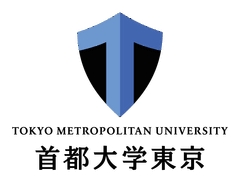 TOKYO METROPOLITAN UNIVERSITY
TOKYO METROPOLITAN UNIVERSITY TOKYO METROPOLITAN UNIVERSITY
TOKYO METROPOLITAN UNIVERSITY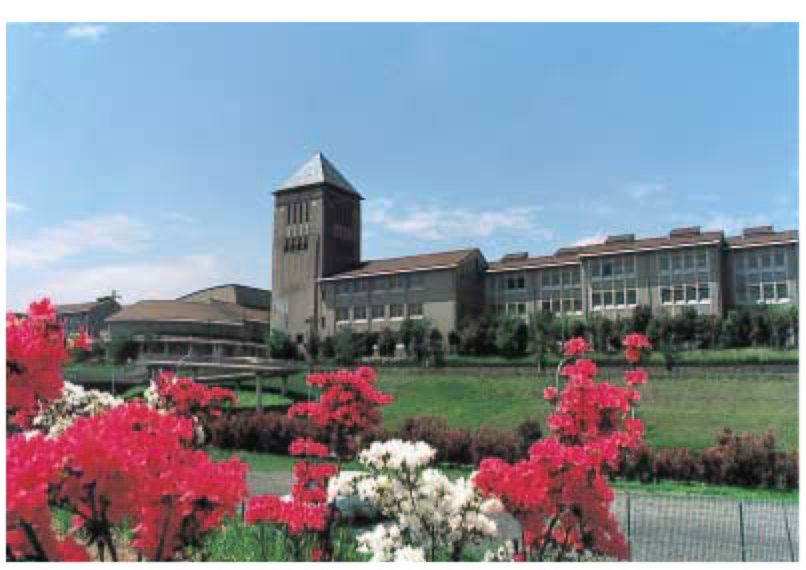 Tokyo
Metropolitan University Campus and the Physics Department
Tokyo
Metropolitan University Campus and the Physics Department
Miscellaneous Aspects of Travel in Japan
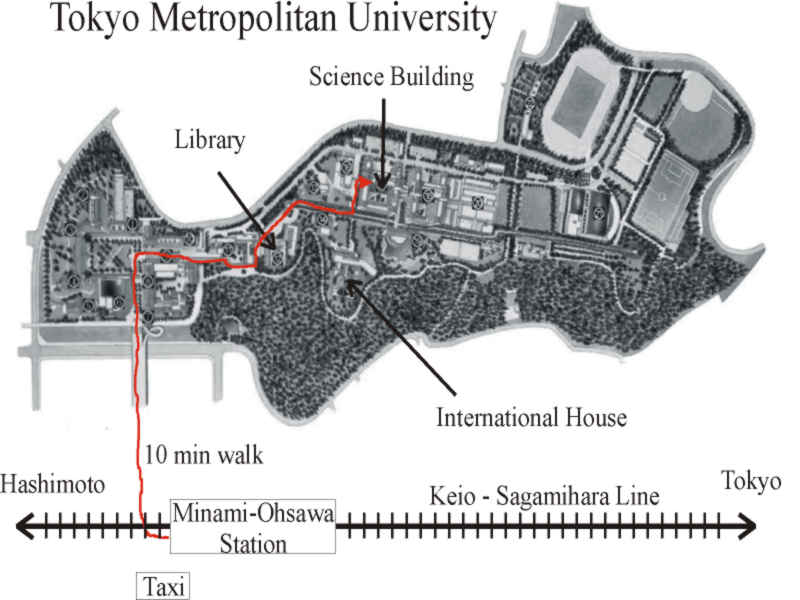 |
The origin of the 'Metropolitan' in Tokyo Metropolitan University has historical roots from when the university was located in central Tokyo. The present day campus of TMU is located about 40 km South West of Tokyo in the hills surrounding the city of Hachioji. It is however, still within the greater Tokyo area. The closest railway station is Minami-Ohsawa on the Keio Line (you may need to download the Japanese fonts for Adobe Acrobat Reader to view this link properly). From the station it is about a 10 minute walk to the Physics Department which is in the Science Building. Alternatively, you can take a Taxi from just outside the station (NB Taxi fares in Japan are breathtaking - even for short distances). On the way you will pass by the bell tower (see above) and later the library before arriving at the Science Building. Opposite the Science Building is International House (i.e., the University Guest House).
|
 |
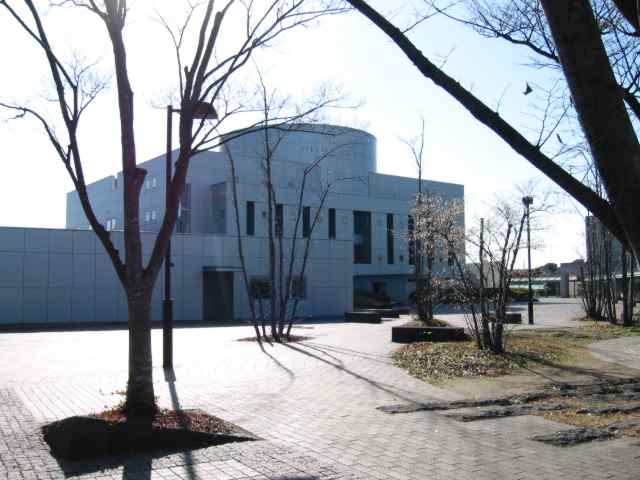 |
International House |
Library |
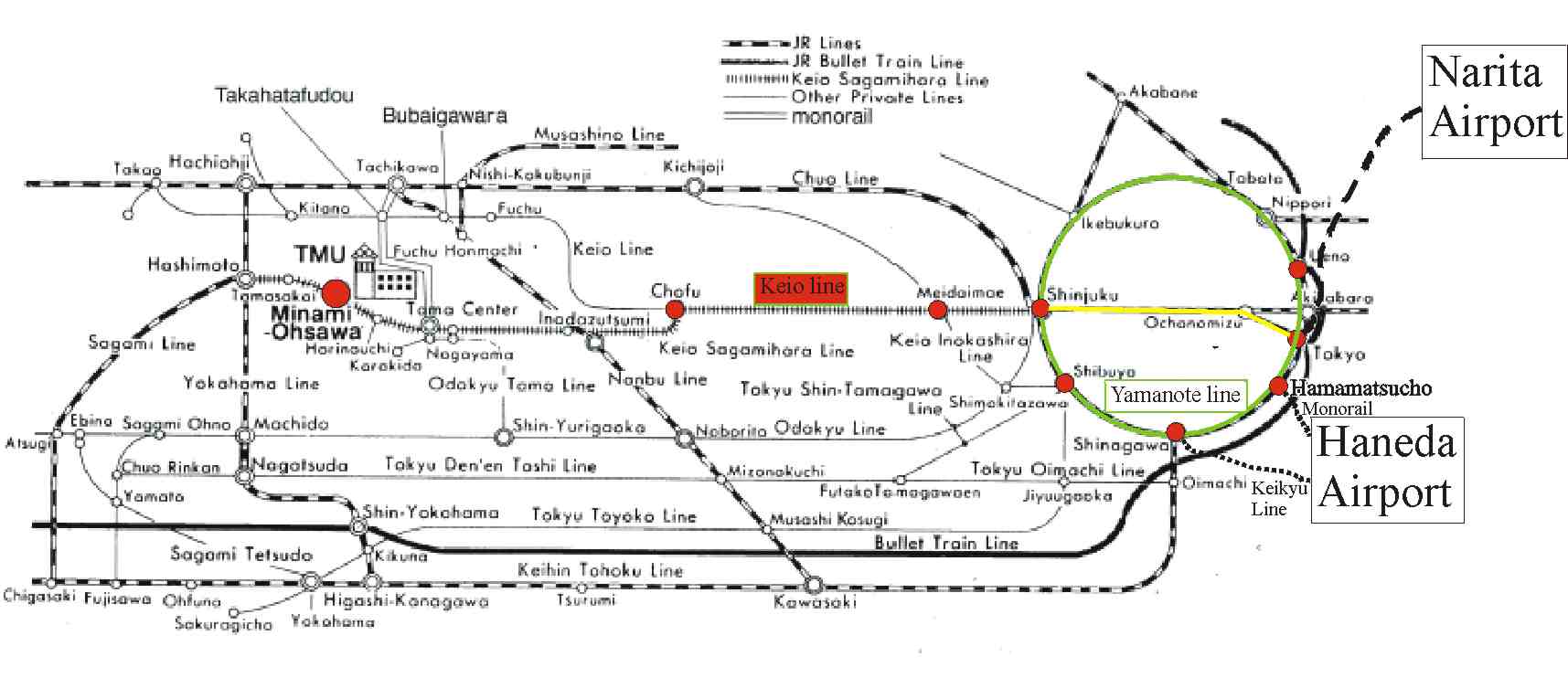 |
Download this map in pdf format A more detailed map can be found here and a smaller map covering central Tokyo can be found here. |
The usual way is to get to take the train from the Keio Shinjuku station. NB three railway companies (Japan Rail (JR) East, Keio and Odakyu) and a few subway lines all have 'Shinjuku stations' (Keio in fact has two, the 'Keio line' and one of the 'Keio New Line') and they are all joined together for maximum confusion. At Shinjuku station you go to the Keio Line ("Keio Sen" in Japanese) - do not go to the Keio New Line! Shinjuku is the terminus of the the Keio line and thus all trains departing on the Keio line go in the correct direction for getting to TMU. Five classes of train are used on the Keio line (local, commuter rapid, express, semi-special express and special express) and which one of the three platforms a class of train departs from depends on the timetable, however, the semi-special express and special express classes tend to depart from platform 3. You can take a (very slow) local or (faster) commuter rapid or express train which stops at Meidaimae and Chofu stations before going down the Sagamihara branch line stopping at Minami-Ohsawa station on the way to Hashimoto (the destination of all trains down this branch line). However the faster way is to take a (very fast) special express or semi-special express train as far as Chofu (the destination of these very fast trains is either Keio Hachioji or Takao-guchi) and then change to another train, that departs from the other side of the same platform, going down the Sagamihara line to Hashimoto. All trains going down the Sagamihara line stop at Minami-Ohsawa. The destination and designation of each train is written in English on both the train and on the station signs. It takes about 30 - 55 minutes from Shinjuku to Minami-Ohsawa and the trains are very frequent (every 10 or 15 minutes) - thus if you make a mistake it is soon rectified. A much more detailed description can be found elsewhere.
An alternative is to take the Keio Inokahsira line from the Keio Shibuya station, change at Meidaimae station and then continue as above.
Going back to Shinjuku is straightforward. All trains leaving Minami-Ohsawa either (1) go to Keio Shinjuku Station, (2) go to Keio's New Line Shinjuku Station which adjoins Keio's Shinjuku Station if the destination is 'Motoyawata' (NB the Keio New line becomes the Toei Shinjuku subway) or (3) terminate before Shinjuku (e.g., Chofu) and you will have to then change to another train to get to Shinjuku.
Most people will enter Japan at Narita Airport. You will arrive at either Terminal 1 or 2 (maps in pdf format of the two terminals can be obtained by selecting Airport Guide in the Narita Airport homepage) - depending on the airline that you fly. Typically it will take from 40 min to 1 hour to clear immigration and retrieve your luggage. Now is the time to change money. Changing money outside of central Tokyo is trying and credit cards are only accepted in a few places.
Numerous possibilities exist for getting from Narita to TMU and a much more detailed description can be found elsewhere (see esp. the route via Motoyawata). Consequently, here we will only describe in detail the fastest and most convenient routes. From the basement of either terminal you can buy tickets for JR East's Narita Express (Note that in both terminals there are two different stations adjacent to each other, one is JR East and the other is Keisei). You can also take JR East's (slower) Airport Narita but it only goes as far as Tokyo Station and then you will have to take the JR Chuo line from platform 1 or 2 of Tokyo station to Shinjuku (yellow line on the map above) or the JR Yamanote line (green circle in the map above) from platform 5 clockwise to Shinjuku. A second alternative is to take the Keisei Skyliner to Nippori Station and then the JR Yamanote line anticlockwise to Shinjuku Station. There is at least one Narita Express every hour starting 7:31 AM until 21:44 PM (see the Narita Express timetable). All Narita Expresses stop at Tokyo Station but not all stop at Shinjuku. Those trains that do go on to Shinjuku separate at Tokyo Station with only the front three or six carriages going to Shinjuku and the others going elsewhere. It makes life much easier to get into the right carriage when you get on at the aiport station and where the carriages will stop is marked on the platform (the correct carriage will also be printed on your ticket). From Narita to Shinjuku it takes about 1 hour 25 min and the fare is ¥ 3110 (ordinary car) and you can buy the tickets at the JR station in the basement. If you buy a ticket very close to departure you probably will not have a seat. Note that were you to take the last Narita Express to Shinjuku you would ultimately arrive at Tokyo Metropolitan University after midnight. Thus, although such a late night trip would be very safe, it would probably be preferable to spend the night at one of the airport hotels and continue to TMU the next day. Taxis from Narita are only for the extremely wealthy.
Getting to and from Narita Airport and navigating Shinjuku Station or taking the Yamanote line (on which passenger density can make a sardine can appear spacious) with large and heavy bags can be very troublesome. A convenient alternative to carrying your bags is to send them by Takkyubin (door to door parcel delivery service). A number of companies (e.g., ABC Sky Partners, Yamato etc.; all very obvious because of all of the luggage) provide this service to and from Narita Airport terminals at the departure and arrival levels, respectively. The cost is quite reasonable (~ ¥ 2000) and your bags are delivered the next day. The address of International House in Japanese is here. The front desk at International House can arrange for your bags to be sent by Takkyubin. You can also use Takkyubin to move your bags from place to place in Japan. The Takkyubin service is endemic and is literally available everywhere in Japan with most convenience stores (e.g., "7-11") acting as agents for them. Few Japanese ever carry their luggage even on domestic trips and there is, in fact, very little space for luggage on trains (the Narita Express is an exception) and buses.
Almost all domestic flights use Haneda airport (the OLD Tokyo International airport). To get here you must either take the Monorail from Hamamatsucho station on the JR Yamanote line or the Keikyu line line from Keikyu Shinagawa station - which is linked to the JR Shinagawa station on the JR Yamanote line. From Shinagawa it costs ¥ 400 and takes 19 min.
More Japanese than you think can speak English. Especially when you look like you are having trouble. It can be very difficult to determine the correct fare from the tables above the ticket vending machines. If you are uncertain of the correct fare simply buy the cheapest ticket and adjust the fare at the fare adjustment machine or ticket office at the other end.
Generally the super express 'Shinkansen' (i.e., bullet) trains are more convenient than domestic flights as the former go from the centre of the city to the centre of the city. The schedules are very regular and can be found here and the fares compares favourably with air travel. Shinkansen tickets can be bought at JR stations or by travel agents. Domestic flight schedules can be found here. Note the comments about Takkyubin above.
A good site for working out how to get from one place to another, how long it takes and how much it costs is the travel expert (NB use the romanization "Minami-Osawa" instead of "Minami-Ohsawa". In some answers involving the circular Yamanote line the terms 'sotomawari' = clockwise and 'uchimawari' = anticlockwise are used).
A pdf file of the JR East railway lines (i.e., it does not include the private lines like Keikyu, Keio and Odakyu) around Tokyo can be downloaded from here.
Some general information on living in Tokyo can be found here, and some sightseeing information can be found here.